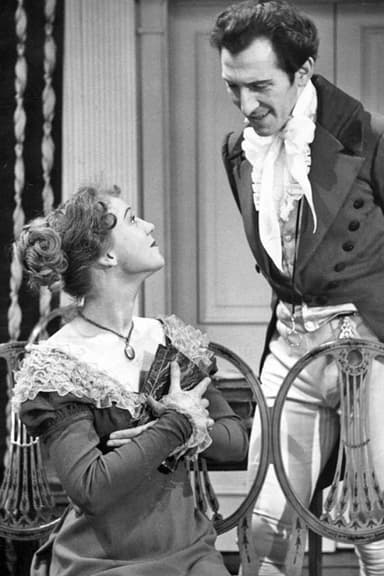
Emma
1972 • Comedy, Drama
After arranging a friend's marriage, the incorrigible Emma Woodhouse turns her attention to matching Mr. Elton, the local vicar, with Harriet Smith, her new protégé.
Why you should read the novel
When you read Jane Austen's 'Emma,' you immerse yourself in the witty and insightful prose of one of literature's greatest novelists. Austen's nuanced depiction of character, along with her sparkling dialogue and social commentary, comes alive on each page in a way that no adaptation can fully capture. The narrative voice in 'Emma' provides humor, irony, and a keen understanding of human nature, guiding you through Emma Woodhouse's entertaining misadventures and growth with direct intimacy.
While the television adaptation presents the story visually, it must condense characters' motivations and feelings for the sake of runtime. The book, in contrast, allows you to experience Emma's inner thoughts and self-reflection firsthand, enriching your empathy and engagement with her journey. Reading the novel also gives you the pleasure of Austen's style—a blend of subtle humor and sharp observation that is difficult to replicate onscreen.
Furthermore, 'Emma' is rich with subplots and character dynamics that sometimes get simplified or omitted in a screen adaptation. By reading the source novel, you'll uncover layers of irony, relationships, and social critique that deepen your appreciation for Austen's brilliant construction. The book offers a more rewarding, nuanced, and immersive exploration of its themes than any adaptation can provide.
Adaptation differences
One key difference between the 1972 TV adaptation and Jane Austen's novel is the level of narrative depth and the presentation of Emma's inner thoughts. The series, due to its visual nature, cannot fully capture the narrative irony and Emma’s evolving self-awareness that Austen crafts through her narration. As a result, viewers receive less insight into Emma’s motivations and internal conflicts, altering the way her character arc is perceived.
Character development and some minor storylines also diverge in the adaptation. Supporting characters such as Miss Bates, Jane Fairfax, and Mr. Knightley may receive less screen time or simplified development, whereas the novel weaves them intricately into Emma’s social world. These alterations impact the complexity of interpersonal dynamics and the subtle nuances of village life that Austen so masterfully builds.
The adaptation must also streamline or omit certain scenes and conversations to fit the episodic structure and limited runtime. For example, dialogues that establish social context or offer satirical commentary in the novel may be shortened or excluded. This results in a tighter, sometimes more straightforward narrative, at the expense of Austen's editorial voice and the book’s leisurely pacing.
Finally, the adaptation's period-specific direction and acting choices can interpret characters and themes differently than the novel presents them. Tones of irony or ambiguity in relationships may be less pronounced onscreen, and viewers are guided by the visual and musical cues rather than by Austen’s precise and often playful language. The result is a faithful, yet inevitably altered, representation of Austen’s original masterpiece.
Emma inspired from
Emma
by Jane Austen















